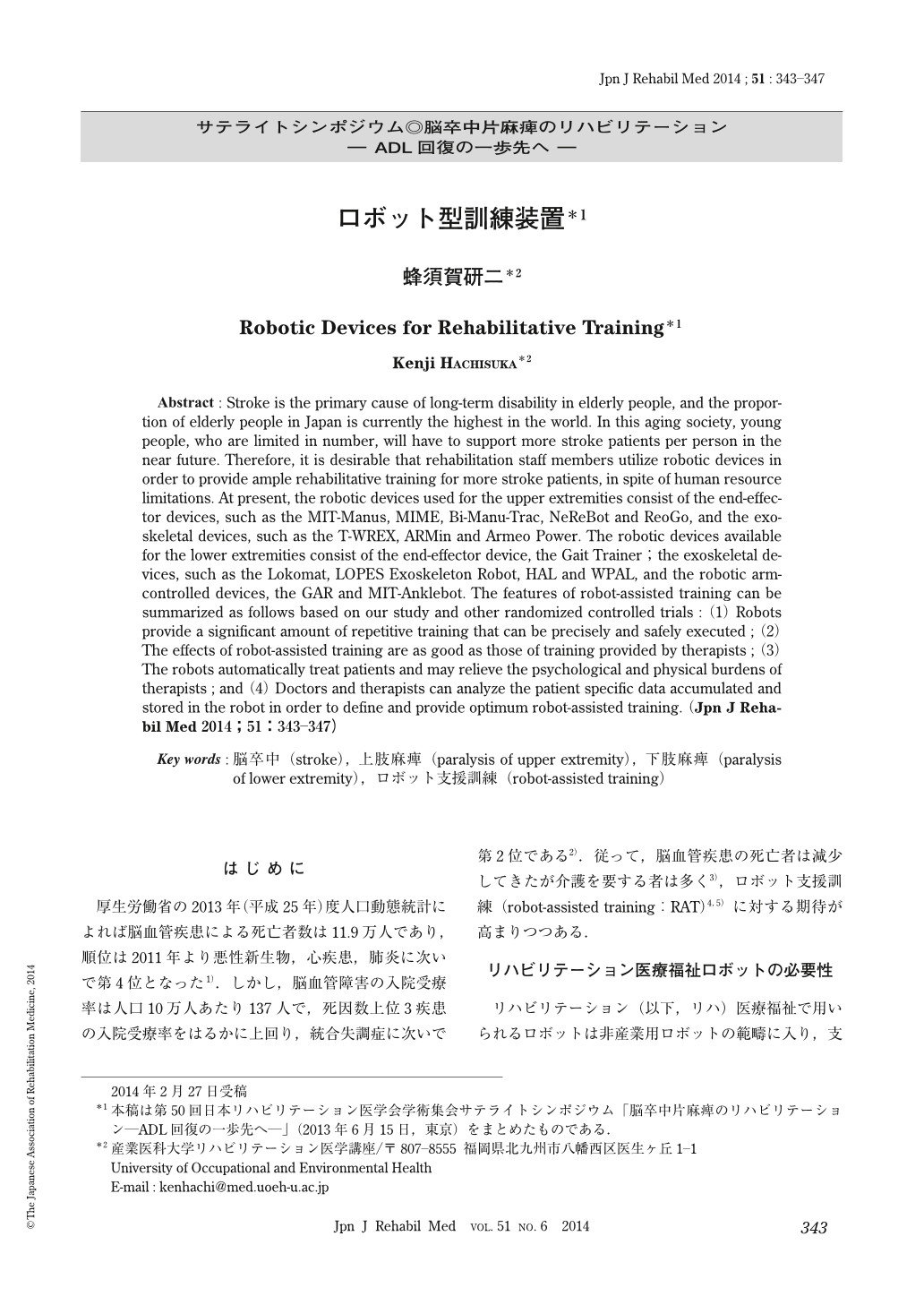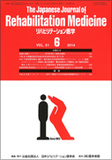Japanese
English
- 販売していません
- Abstract 文献概要
- 1ページ目 Look Inside
- 参考文献 Reference
はじめに
厚生労働省の2013年(平成25年)度人口動態統計によれば脳血管疾患による死亡者数は11.9万人であり,順位は2011年より悪性新生物,心疾患,肺炎に次いで第4位となった1).しかし,脳血管障害の入院受療率は人口10万人あたり137人で,死因数上位3疾患の入院受療率をはるかに上回り,統合失調症に次いで第2位である2).従って,脳血管疾患の死亡者は減少してきたが介護を要する者は多く3),ロボット支援訓練(robot-assisted training:RAT)4,5)に対する期待が高まりつつある.
Abstract : Stroke is the primary cause of long-term disability in elderly people, and the proportion of elderly people in Japan is currently the highest in the world. In this aging society, young people, who are limited in number, will have to support more stroke patients per person in the near future. Therefore, it is desirable that rehabilitation staff members utilize robotic devices in order to provide ample rehabilitative training for more stroke patients, in spite of human resource limitations. At present, the robotic devices used for the upper extremities consist of the end-effector devices, such as the MIT-Manus, MIME, Bi-Manu-Trac, NeReBot and ReoGo, and the exoskeletal devices, such as the T-WREX, ARMin and Armeo Power. The robotic devices available for the lower extremities consist of the end-effector device, the Gait Trainer; the exoskeletal devices, such as the Lokomat, LOPES Exoskeleton Robot, HAL and WPAL, and the robotic arm-controlled devices, the GAR and MIT-Anklebot. The features of robot-assisted training can be summarized as follows based on our study and other randomized controlled trials : (1)Robots provide a significant amount of repetitive training that can be precisely and safely executed ; (2)The effects of robot-assisted training are as good as those of training provided by therapists ; (3)The robots automatically treat patients and may relieve the psychological and physical burdens of therapists ; and (4)Doctors and therapists can analyze the patient specific data accumulated and stored in the robot in order to define and provide optimum robot-assisted training.

Copyright © 2014, The Japanese Association of Rehabilitation Medicine. All rights reserved.


